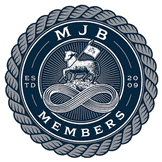THE MAKERS
Good Jeans: Made In Japan
Words:
1024
18 / 05 / 2024

Welcome to M.J Bale! Sign up online to become an MJB Member and access all the best rewards.
1024
18 / 05 / 2024
"OKAYAMA HAS BEEN THE POINT OF ORIGIN FOR ALL PREMIUM DENIM IN JAPAN SINCE THE CLOSE OF WWII"